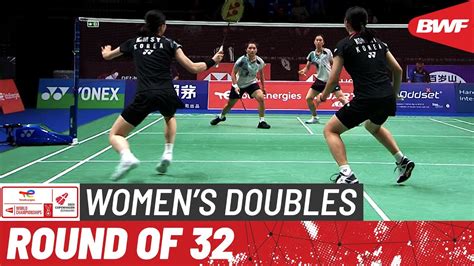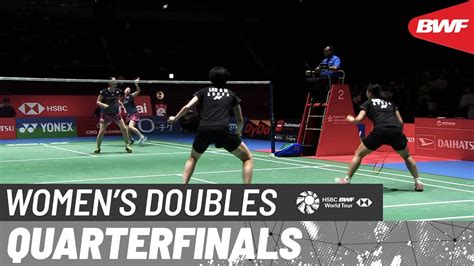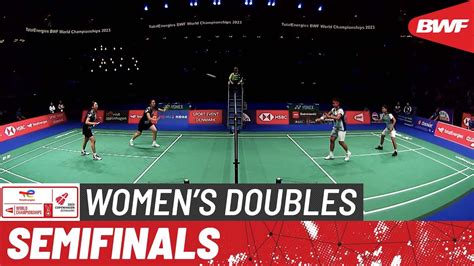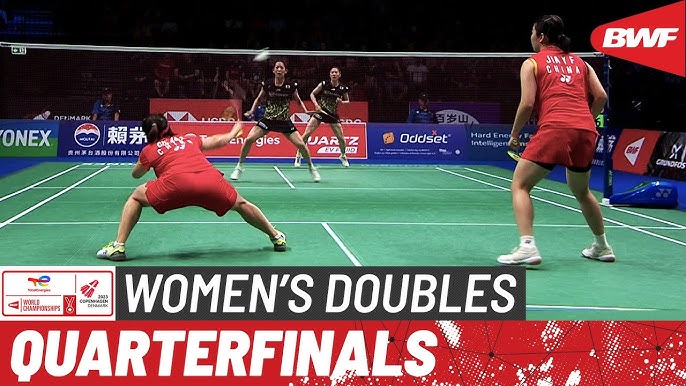The Women’s World Cup has not only elevated the profile of soccer but has also had a profound impact on the visibility and growth of women’s sports globally. As the world watches the top female athletes compete on the grand stage, it’s crucial to explore how this momentum is influencing other sports, like badminton. This article delves into the latest updates in badminton, examines key players and teams, and discusses the broader implications of the Women’s World Cup. From media coverage to fan engagement, we’ll explore the challenges and opportunities facing women athletes, and what the future holds for the continued rise of women’s sports.
xishoot.xyz will provide a detailed exploration of this topic.
1. The impact of the Women’s World Cup on the growth and visibility of women’s sports worldwide.
The Women’s World Cup has been a pivotal moment in the evolution of women’s sports, significantly accelerating their growth and visibility worldwide. The tournament has captivated millions, showcasing the exceptional skill, unwavering determination, and remarkable athleticism of female athletes. This increased exposure has not only inspired a new generation of young women to pursue sports but has also spurred significant investments in women’s sports infrastructure, training programs, and media coverage.
The surge in attention surrounding major events like the Women’s World Cup has sparked a wider recognition within the sports industry of the commercial viability of women’s sports. This has translated into a significant increase in sponsorships, endorsements, and viewership. The ripple effect is evident beyond soccer, with other sports like badminton also benefiting from this growing interest. This global focus on women’s athletic achievements is dismantling longstanding barriers, fostering a more equitable landscape and paving the way for greater recognition and support for female athletes across all disciplines. The impact is profound, signaling a fundamental shift in how women’s sports are viewed and valued around the world.

2. Key players and teams to watch in the tournament and their potential impact.
The Women’s World Cup is set to showcase a collection of remarkable players and teams poised to leave a lasting mark, both on the field and in the wider world of women’s sports. Leading the charge is the United States, a perennial powerhouse renowned for its dominance and depth. European nations like England and Spain are also emerging as formidable forces, blending tactical brilliance with a youthful exuberance. With their star-studded rosters, these teams are pushing the boundaries of women’s soccer, igniting the passion of fans and inspiring athletes around the globe.
The U.S. boasts star players like Alex Morgan and Megan Rapinoe, whose exceptional abilities and leadership continue to command worldwide acclaim. However, the future of the game lies in the hands of rising stars like Lauren Hemp of England and Salma Paralluelo of Spain. These young talents bring a fresh perspective and innovative style of play, ushering in a new era for the sport.
The performances of these players and teams in the Women’s World Cup are crucial not only in their quest for the championship but also in propelling the progress of women’s sports. Their triumphs on the global stage are poised to inspire the growth of other sports, such as badminton, by showcasing the immense potential and power of female athletes at the pinnacle of competition.

3. Analysis of the latest badminton updates, including major tournaments, player rankings, and emerging trends.
The world of badminton is a dynamic and ever-changing sport. Key tournaments and player rankings illustrate the fierce competition at the elite level. Recent major tournaments, such as the BWF World Championships and the All England Open, have showcased intense battles between top players. New champions have emerged, while established stars have solidified their dominance.
Japan’s Akane Yamaguchi and Taiwan’s Tai Tzu-ying remain at the pinnacle of women’s singles badminton, their consistent dominance and exceptional skill setting the benchmark for the sport. Their encounters are highly anticipated, attracting widespread attention from fans and experts. However, a new generation of players, including South Korea’s An Se-young and China’s Chen Yufei, is rising to challenge the established order, injecting a dynamic element of unpredictability into the game.
The doubles category is no less thrilling, featuring fierce rivalries like the one between Indonesia’s Greysia Polii and Apriyani Rahayu, known for their unwavering determination and tactical genius. The rise of mixed doubles, with dynamic partnerships from nations such as China and Japan, only amplifies the excitement.
Badminton is evolving rapidly, driven by a focus on speed and agility, along with the integration of innovative training methods and technologies. These advancements are transforming the sport, pushing its limits and ensuring its continued appeal as a dynamic and captivating discipline in the international arena.

4. Discussion of the challenges and opportunities facing women athletes in both soccer and badminton.
Women athletes in both soccer and badminton face unique challenges and opportunities as they strive for success in their respective sports. One of the most pressing challenges is the persistent issue of unequal pay and funding compared to their male counterparts. Despite their exceptional talent and achievements, female athletes often receive less financial support, which can impact their training, development, and overall career longevity.
Another challenge is the limited media coverage of women’s sports, which hinders their visibility and recognition. While the Women’s World Cup has significantly boosted the profile of women’s soccer, other sports like badminton still struggle to gain equal attention. This lack of exposure not only affects sponsorship opportunities but also limits the inspiration and role models available to aspiring young athletes.
However, these challenges also present opportunities. The growing global interest in women’s sports, fueled by events like the Women’s World Cup, is beginning to shift public perception and drive demand for greater equality. This momentum provides a platform for female athletes to advocate for better conditions, increased investment, and enhanced media coverage.
In both soccer and badminton, women athletes are pushing boundaries and breaking stereotypes, paving the way for future generations. Their resilience and determination are key to overcoming obstacles and capitalizing on the opport
5. Insights into training, preparation, and strategies for success in elite-level sports.
Success in elite-level sports, whether in soccer or badminton, demands rigorous training, meticulous preparation, and strategic planning. Top athletes dedicate countless hours to honing their skills, with a strong emphasis on physical conditioning, technical precision, and mental resilience. In soccer, training routines often focus on building endurance, agility, and teamwork, while also refining tactical awareness and game intelligence.
In badminton, where speed and precision are paramount, athletes prioritize explosive strength, quick reflexes, and advanced footwork. The incorporation of cutting-edge technologies, such as performance analytics and wearable fitness trackers, allows for personalized training regimens that optimize performance and reduce the risk of injury.
Mental preparation is equally crucial, with elite athletes engaging in visualization techniques, mindfulness practices, and mental conditioning to stay focused and composed under pressure. Strategic planning, including in-depth analysis of opponents and adaptive game strategies, further enhances their competitive edge. Together, these elements form the foundation of success at the highest levels of sport.
6. Examination of the role of media coverage and sponsorship in the promotion of women’s sports.
Media coverage and sponsorship are essential for promoting and growing women’s sports. Greater media visibility boosts the profiles of female athletes and their sports, making them more accessible and inspirational for a global audience. The Women’s World Cup, for instance, has benefitted from widespread media attention, highlighting the skill and excitement of women’s soccer on an international stage. This exposure not only draws in new fans but also attracts sponsors who recognize the commercial potential of women’s sports.
Sponsorship plays a vital role in supporting women’s sports, providing athletes with the financial resources necessary for enhanced training facilities, coaching, and essential resources. This support also enables sports organizations to invest in developing and promoting women’s competitions. Despite these benefits, a stark disparity persists in media coverage and sponsorship between men’s and women’s sports. Bridging this gap is paramount for the continued progress of women’s sports. Increased investment and greater visibility will foster higher participation, stronger fan engagement, and sustained growth across all disciplines.
7. Exploration of the importance of fan engagement and support in the growth of women’s sports.
Fan engagement and support are crucial to the growth and success of women’s sports. Active fan participation not only enhances the atmosphere of live events but also contributes to the sport’s overall visibility and appeal. Engaged fans help drive media coverage and sponsorship deals, creating a positive feedback loop that benefits athletes and organizations alike.
The rise in fan support for women’s sports, exemplified by the global enthusiasm for the Women’s World Cup, has highlighted the growing demand for female athletics. This increased engagement translates into higher attendance at games, greater social media interaction, and stronger community support. It also encourages broadcasters and sponsors to invest more in women’s sports, further amplifying their reach and impact.
Moreover, fan support fosters a sense of belonging and motivation for athletes, boosting their performance and commitment. For emerging sports and athletes, building a dedicated fan base is essential for sustaining interest and growth. By actively engaging with fans through social media, events, and grassroots initiatives, women’s sports can continue to gain traction, inspire future generations, and achieve greater parity with their male counterparts.
8. Discussion of the intersectionality of gender, race, and nationality in women’s sports.
The intersectionality of gender, race, and nationality plays a significant role in shaping the experiences and opportunities available to women in sports. Female athletes often navigate a complex landscape where gender disparities intersect with racial and national identities, affecting their visibility and treatment.
Women of color, for example, may face compounded barriers due to both gender and racial biases, impacting their access to resources, media representation, and opportunities. Similarly, athletes from less represented nations might struggle with fewer resources and less exposure compared to their counterparts from more established sports nations.
This intersectionality influences how athletes are perceived and supported within the global sports arena. Prominent figures who break through these barriers, such as those making headlines in the Women’s World Cup, not only challenge stereotypes but also help pave the way for more inclusive and equitable practices. Addressing these intersecting factors is crucial for fostering a more diverse and supportive environment in women’s sports, ensuring that all athletes have equal opportunities to succee
9. Predictions for the future of women’s sports and the potential for continued growth and development.
The future of women’s sports is bright, holding great promise for continued expansion and advancement. The surging popularity and visibility of events like the Women’s World Cup are paving the way for increased recognition and investment in female athletics. As public engagement and support for women’s sports grows, we can anticipate a rise in media coverage and sponsorship opportunities, further fueling the development of these sports.
The increasing focus on gender equality, coupled with the demand for equal pay and resources, is poised to bring about positive transformations. We can expect more equitable funding, enhanced facilities, and greater support for women athletes across all sports. Moreover, the incorporation of cutting-edge training technologies and strategies will further elevate the standards of competition and performance.
The growth of women’s sports is fueled by a burgeoning fan base and a stronger push for inclusivity. This creates a more equitable playing field, paving the way for an exciting future for women in athletics.
10. Recommendations for further promoting and supporting women athletes and their achievements.
To further promote and support women athletes and their achievements, several key actions can be taken. First, increasing media coverage and spotlighting female athletes in mainstream sports channels will help boost their visibility and inspire new audiences. Media organizations should commit to equitable coverage, showcasing the talent and stories of women across various sports.
Secondly, enhancing sponsorship and financial investment is vital. Companies and organizations should be encouraged to support women’s sports through sponsorship agreements, endorsements, and funding for training and development programs. This financial support can significantly influence athletes’ opportunities and resources.
Third, expanding grassroots initiatives and youth programs will encourage young girls to participate in sports from an early age. Investing in these programs will cultivate future generations of female athletes.
Finally, promoting diversity and inclusivity within sports organizations and leadership roles will ensure that women from all backgrounds have equal opportunities and representation. By implementing these recommendations, we can create a more supportive and equitable environment for women in sports.
The Women’s World Cup has catalyzed significant progress in women’s sports, enhancing visibility and inspiring growth across disciplines like badminton. With continued focus on media coverage, sponsorship, and inclusive support, the future for women athletes looks bright. By addressing challenges and seizing opportunities, we can further elevate and celebrate their remarkable achievements.
xishoot.xyz
